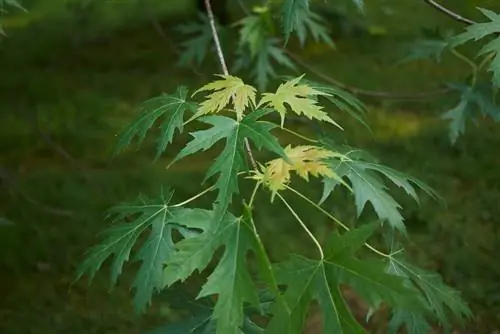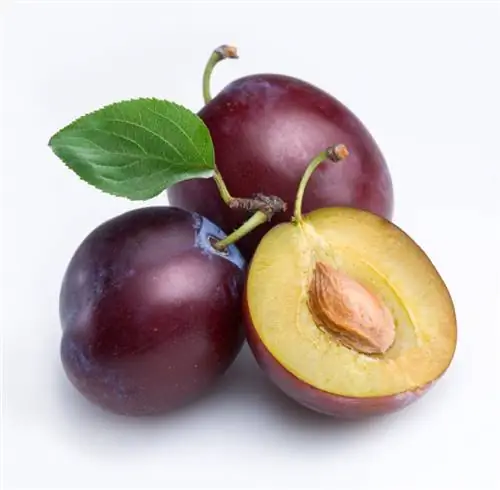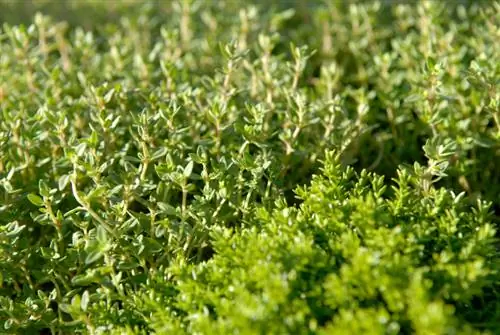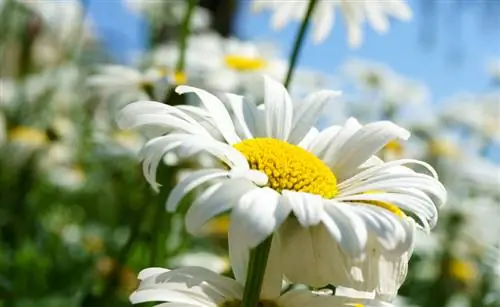- Author admin [email protected].
- Public 2023-12-16 16:46.
- Last modified 2025-06-01 06:02.
Silver maple enriches the garden as a feast for the senses. In addition to its diverse visual attributes, the rare maple species with its plant sap gives us a sweet treat for the palate in the form of maple syrup. This profile invites you to get to know the North American character better.
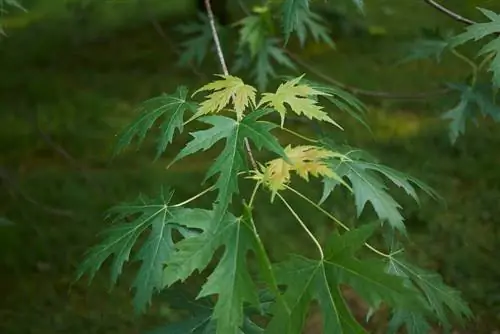
What does the profile of the silver maple look like?
The silver maple (Acer saccharinum) is a deciduous tree with a spreading crown that comes from North America. It reaches a height of 15 to 25 m and is hardy down to -32 degrees Celsius. Its leaves are 5-lobed and silvery hairy. The flowering period is from February to March.
Silver maple profile - botanical classification and properties in brief
Despite its qualities as a bee pasture and reliable winter hardiness, silver maple is rarely found in Europe. This attractive deciduous tree is therefore interesting for gardeners with a penchant for rarities. The following profile summarizes the most important attributes:
- Name of the species: Silver maple (Acer saccharinum)
- Deciduous tree with a sprawling crown of overhanging branches
- Area of origin: eastern North America
- Growth height: 15 to 25 m, rarely up to 36 m
- Annual growth: 35 to 50 cm per year in the first 25 to 30 years
- Leaf: 5-lobed, deeply cut, light green on top, silvery hairy underneath
- Flowers: green (male), red (female) with high nectar content
- Flowering time: February and March before the leaves emerge
- Fruits: winged nuts, acute-angled, 3-5 cm long
- Root growth: Shallow roots with extensive main roots
- Winter hardiness: up to -32 degrees Celsius
- Use in Europe: park and street tree
- Location: sunny to partially shaded, sheltered from the wind
In its North American homeland, the silver maple is grown primarily to extract the plant sap to make maple syrup.
Make your own maple syrup - is that possible?
From the age of 40, your silver maple becomes useful as a source of sugary syrup. To access the plant sap, specialist retailers offer special taps (€69.00 on Amazon) with collection containers. Harvest time is in early spring, when nighttime temperatures hover around freezing point and the daytime temperatures are already pleasantly warm.
On the south side of the trunk, drill a hole in the bark at a height of 30 to 100 cm, matching the size of the tap. As a rule of thumb, a silver maple tree releases 40 liters of sap by the end of the season, which can be used to make 1 liter of maple syrup.
Tip
If the size of the area allows it, a silver maple should not be missing in the natural garden. At the end of February/beginning of March, the crown puts on its flower dress and provides bees, bumblebees and other insects with a lavish nectar buffet. Associated with sycamore maple (Acer pseudoplatanus), Norway maple (Acer platanoides) and field maple (Acer campestre), the maple group makes an important contribution to the survival of highly threatened pollinators.

